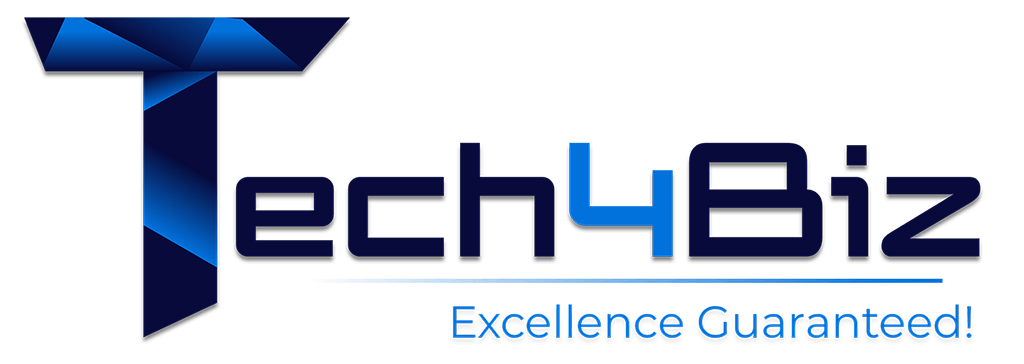
- November 26, 2024
- 12:41 pm
The Evolution of Front-End Frameworks: From jQuery to React and Beyond
Introduction
The world of front-end web development has evolved drastically over the last two decades. What started as simple, static web pages has transformed into highly interactive and dynamic user interfaces powered by sophisticated JavaScript frameworks. From the days of jQuery, which simplified DOM manipulation, to the rise of modern frameworks like React, Angular, and Vue.js, front-end development has undergone significant changes to meet the demands of today’s complex web applications.
In this post, we’ll take a journey through the evolution of front-end frameworks, compare the pros and cons of popular frameworks like React, Angular, and Vue.js, and explore the key factors that have driven this transformation.
The Early Days: jQuery and the Birth of Dynamic Web Development
Before the advent of modern JavaScript frameworks, front-end development was a more manual and error-prone process. Web developers had to rely heavily on vanilla JavaScript (pure JS) for DOM manipulation, event handling, and AJAX requests. This approach worked, but it often led to complex and difficult-to-maintain code, especially for dynamic web applications.
Enter jQuery in 2006. Developed by John Resig, jQuery revolutionized front-end development by offering a simple and concise API for manipulating HTML documents, handling events, and making AJAX requests. Its cross-browser compatibility was a game-changer, making it easier to work across different browsers, which was a huge challenge at the time.
Pros of jQuery:
- Ease of use: Simple syntax for DOM manipulation, event handling, and animations.
- Cross-browser compatibility: Ensured the same behavior across all browsers.
- Large ecosystem: A wide range of plugins made it easy to extend functionality.
Cons of jQuery:
- Performance issues: As applications grew more complex, jQuery could become inefficient and slow, especially with large DOM manipulations.
- Lack of structure: jQuery didn’t enforce any architecture, which led to messy, hard-to-maintain codebases as projects scaled.
- Not optimized for single-page apps (SPAs): jQuery was not designed for managing the complexity of SPAs, which needed a more robust system for handling state and data flow.
The Rise of Single-Page Applications (SPAs) and the Need for Frameworks
As web applications grew in complexity, the need for more structured solutions emerged. Traditional multi-page websites (MPAs) were gradually being replaced by single-page applications (SPAs), which load a single HTML page and dynamically update content as the user interacts with the app. This shift required a new breed of front-end tools to manage user interactions, handle state, and enable real-time data updates.
This is where frameworks like Angular, React, and Vue.js came in. Unlike jQuery, which was a library for simple tasks, these new frameworks provided full-fledged solutions for building complex SPAs.
Angular: The Full-Featured Framework
Angular (originally AngularJS) was introduced by Google in 2010, and it became one of the first major frameworks to address the growing complexity of SPAs. Unlike jQuery, Angular was a complete framework that handled everything from data binding and routing to dependency injection and form validation.
Pros of Angular:
- Comprehensive solution: Angular provides everything needed for building SPAs, including routing, form validation, and two-way data binding.
- Two-way data binding: Angular automatically synchronizes data between the model and view, making it easier to manage state and UI updates.
- Built-in dependency injection: Angular’s DI system makes it easier to manage and test components.
Cons of Angular:
- Steep learning curve: Angular’s syntax and concepts, such as directives, services, and dependency injection, can be overwhelming for beginners.
- Verbosity: Angular applications can become quite large and complex, requiring a lot of boilerplate code, especially for smaller projects.
- Performance concerns: The two-way data binding model, while convenient, can introduce performance issues in large, complex applications due to excessive DOM updates.
React: A New Era of Component-Based Development
In 2013, React was released by Facebook. Unlike Angular, which is a full framework, React is a library focused solely on building user interfaces (UI). React’s component-based architecture, virtual DOM, and one-way data flow were revolutionary concepts that set it apart from previous solutions.
Pros of React:
- Component-based architecture: React introduced a declarative, reusable component model that encourages modularity and maintainability.
- Virtual DOM: React’s virtual DOM optimizes rendering performance by only updating the parts of the UI that have changed, leading to faster updates.
- Unidirectional data flow: React’s one-way data flow makes it easier to manage state and debug applications.
- Large ecosystem: React has a massive ecosystem of libraries, tools, and community support.
Cons of React:
- Learning curve: React introduced a new way of thinking about development with JSX and a virtual DOM, which can be challenging for beginners.
- Not a full framework: React focuses solely on the view layer, meaning you need to rely on other tools (e.g., Redux, React Router) for state management and routing.
- Frequent updates: The fast-paced development of React can sometimes make it difficult to keep up with the latest changes and best practices.
Vue.js: A Lightweight Alternative
Released in 2014, Vue.js was created by former Google engineer Evan You as a lightweight alternative to Angular and React. Vue combines some of the best aspects of both frameworks: Angular’s two-way data binding and React’s component-based architecture. Vue focuses on being progressively adoptable, meaning you can introduce it into a project incrementally.
Pros of Vue.js:
- Lightweight: Vue is small and doesn’t come with unnecessary features, making it faster to load and use.
- Simple syntax: Vue has an easy-to-learn syntax, making it a good choice for developers new to front-end frameworks.
- Two-way data binding: Vue provides two-way data binding, similar to Angular, while also allowing for fine-grained control over updates like React.
- Good documentation: Vue’s documentation is well-structured, helping developers get started quickly.
Cons of Vue.js:
- Smaller ecosystem: While Vue is growing, its ecosystem and community are still smaller compared to React and Angular.
- Less enterprise adoption: Vue is less commonly used in large-scale enterprise applications, where Angular and React dominate.
- Over-flexibility: The flexibility of Vue can lead to inconsistent codebases if not managed properly.
Comparing React, Angular, and Vue.js
To help you decide which framework is best for your project, here’s a quick comparison of React, Angular, and Vue.js:
| Feature | React | Angular | Vue.js |
|---|---|---|---|
| Architecture | Library (UI-focused) | Full framework | Lightweight framework |
| Learning Curve | Moderate | Steep | Easy to moderate |
| Data Binding | One-way | Two-way | Two-way |
| Performance | High (Virtual DOM) | Moderate (2-way binding issues) | High |
| Community & Ecosystem | Large and active | Large (enterprise-focused) | Growing, but smaller than React |
| Use Case | Complex UIs, SPAs, mobile apps | Enterprise-grade applications | Small to medium-sized apps |
| Popular Projects | Facebook, Instagram, Airbnb | Google, Microsoft, Adobe | Alibaba, Xiaomi, 9GAG |
The Future of Front-End Frameworks
While React, Angular, and Vue.js dominate the front-end landscape today, new technologies and concepts continue to emerge. The rise of Web Components, Svelte (a compiler-based framework), and solid.js (a fast and reactive framework) indicate that front-end development is constantly evolving.
As these tools gain traction, developers will continue to have more options for building scalable, maintainable, and performant web applications. The key to choosing the right framework will depend on the project’s needs, the team’s expertise, and the long-term goals of the application.
Conclusion
The evolution of front-end frameworks—from the simplicity of jQuery to the power of React, Angular, and Vue.js—has been a journey of innovation and progress. Each of these frameworks has brought unique solutions to the challenges of building dynamic, interactive web applications. By understanding their strengths and weaknesses, developers can choose the right framework for their project and stay ahead in the ever-changing world of front-end development.
Call to Action
Are you currently working with a front-end framework, or are you thinking about switching to a new one? Let us know which framework you prefer and why, and feel free to share your experiences in the comments!
Hey
I'm Emma!

Lorem ipsum dolor sit amet, consectetur adipiscing elit. Ut elit tellus, luctus nec ullamcorper mattis, pulvinar dapibus leo.
